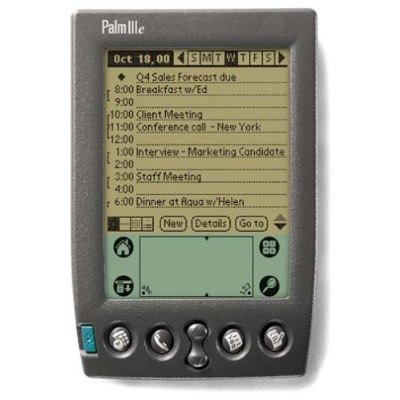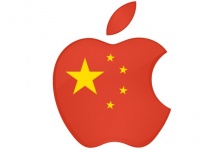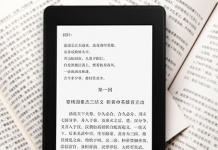 Here’s a bit of sad news. The beleaguered Palm Inc. has put itself up for sale, working with Goldman Sachs and Qatalyst Partners to try to find a buyer, Bloomberg reports.
Here’s a bit of sad news. The beleaguered Palm Inc. has put itself up for sale, working with Goldman Sachs and Qatalyst Partners to try to find a buyer, Bloomberg reports.
As we previously reported, Palm has been having a hard time lately as its devices simply failed to find a market. Word of the sale comes as no surprise; sooner or later something like this had to happen. In a way, history is repeating itself, because the original Palm ran out of money and had to sell itself to US Robotics shortly after getting started.
If any one company could be said to be synonymous with the original e-book revolution, it would be Palm. The original Palm Pilots were the devices that first hooked people on e-reading.
An editor of science-fiction books that I know fell in love with the Pilot when he realized that he could put an entire manuscript into a box that weighs 4.7 ounces and fits into his jacket pocket. "You really have to have spent a decade of your life schlepping 600-page manuscripts around to understand how attractive this is," he says. He admits that he wouldn’t use the Pilot’s tiny screen — it’s smaller than an index card — for major editing. But, he says, "An enormous amount of what an editor has to do day in and day out is just reading. These days, if I can get an e-text version of a big document I have to read, the first thing I do is hot-sync it onto my Pilot."
It is probably a measure of how quickly we get used to improvements that looking back at that original 160×160 resolution black-and-white LCD screen now would seem like reading on a pocket calculator. But back in those days, it was the height of e-reading convenience.
Even Microsoft was stuck playing catch-up, coming out with a product it unbelievably tried to get away with naming “Palm PC” before Palm litigated to force a change to “Pocket PC”.
The Corporate Shuffle
Looking back at the Palm story brings up a spate of old brand names we haven’t heard of in years. Who would have thought back in the early ‘90s when half the modems on the market were “US Robotics” brand that it would be remembered now for buying Palm in 1995 before itself being bought by 3Com in 1997?
Palm itself was no stranger to company shakeups, of course. The original Palm Pilot’s creators, Jeff Hawkins and Donna Dubinsky, left the company to found rival Handspring, maker of the Visor and the original Treo. Then 3Com spun off Palm in 2000, and it merged with Handspring in 2003.
For a time, Palm itself even dabbled in e-books, buying Peanut Press and renaming it Palm Digital Media, before selling it again to someone else who renamed it eReader.
Resting on Laurels
Palm used to be the big name in hand-held technology. The Palm OS was licensed and built into an amazing number of hand-held utility tools—bar-code scanning inventory tagging systems. Shipper package tracking tools. You name it, there was a Palm for it.
But now Palm’s share of the marketplace is in the single digits—and it was ailing even before the failure of the Pre, as I noted back in 2008. Why?
My guess is that it’s something like the way trucking edged out trains for long-distance transportation. It’s an oft-heard, pithy aphorism that the railroads declined because they forgot that they weren’t in the railroad business, they were in the transportation business.
I think that, even though it created the first smartphones, Palm still thought it was in the PDA business. It didn’t really know what to do with smartphones. And then first Blackberry (which started out as little more than a pocket device for receiving e-mail) and Apple came along to eat its lunch.
Kind of like Sony did, Palm rested on its laurels, assuming that its well-known brand name would carry it through. Through 2009 it was still using a version of the same old PalmOS that had been around for ten years, while other companies were coming up with newer operating systems without the old PalmOS’s limitations.
Palm simply waited too late to get started—and did a poor job capitalizing on its new devices.
The Future of Palm
As for what the future holds for Palm, it may not be entirely bleak. According to the Bloomberg article:
“Palm still has quite a good brand in the U.S. market, and some strong technology, so you can do something with it,” said Frank He, a technology analyst at BOC International Holdings Ltd. in Hong Kong. “The shares have gone down a lot and the company may become attractive to anyone looking for a turnaround play.”
HTC and Lenovo have reportedly expressed an interest. Dell reportedly considered Palm but decided against making an offer. HTC might be particularly interested in Palm given that Palm’s patent portfolio might well be helpful in the HTC/Apple patent lawsuit currently underway. Some Chinese phone manufacturers may be interested as well.
PC World has an article suggesting a few buyers who might have a good use for Palm’s assets, too.
Whatever happens, Palm’s new owners will have their work cut out for them if they want Palm devices to be competitive in the marketplace again.
































I still use my Palm IIIxe when I want to read and don’t want to lug around a full-sized reader. That said, I think Palm’s problems go back to its decision to spin off its OS group. That was a disaster from the start, and a major reason why Palm didn’t keep up.
Although it’s sad, in some ways it’s encouraging, too. No matter how dominant a company is, if it doesn’t focus on satisfying its customers (and potential customers), someone else will steal the market.
Rob Preece
Publisher
I’ve still got a IIIxe myself, but didn’t use it a lot after I snagged a TX. The TX I find to be as good for ebook reading as the IPod Touch, and I’d have been happy to stay with the Palm platform if they’d continued to offer a stand-alone pda as well as smartphones. Once they discontinued the TX and Z22, I jumped ship — didn’t want to be dependent on something I couldn’t replace if necessary. But the Palms were nifty little devices — easy to use and maintain and just fine for reading. Used ’em for ebook reading (as well as calendar, notes, etc) for nearly 10 years with never a problem.
Bests to all,
–tr
I do all of my ereading on a Palm T/X and I won’t switch until it dies, and find something that has the same level of compatibility with my fictionwise book collection.
@john:
Compatibility shouldn’t be an issue. There are a lot of programmable devices that can run eReader software for Secure eReader format.
If you’re looking for a dedicated e-reader with e-ink screen, you might look at the Barnes & Noble nook. It works fine with the Secure eReader format e-books. The nook also handles Adobe EPUB and the new B&N EPUB formats. And, in a fashion, PDFs.
Another possibility is the Ectaco Jetbook-Lite. Unfortunately, the only DRMed format that it handles is Secure eReader. The reason that I say “unfortunately” is that Secure eReader is a dying format. Barnes & Noble is abandoning it, leaving only Fictionwise (and its eReader.com site) to supply e-books in that format. And Fictionwise is owned by B&N, so who knows how much longer new e-books will be available in Secure eReader format.
To be fair in regards to eReader, B and N has backtracked a bit in its transition to epub. If you download books via the website (as opposed to the B and N Software), you still get eReader format books that will work fine on the original eReader software. It allows me to read my B and N purchases on my Android phone.
And if you go to the software downloads page at ereader.com, there’s a version now for Ubuntu Linux. So reports of the format’s demise may be a tad premature.
Ereader has always had the most user-friendly DRM of the lot. That’s a big point in its favor — the software’s available for a lot of platforms, and if the software’s loaded on your machine, you can read your ebooks on it.
Bests,
–tr
Slight correction: The Palm was what introduced many e-reader geeks to e-reading. 🙂 But the general public? I carried Palms as e-readers for close to a decade, got the occasional curious inquiry, but the near-universal reaction was ‘no way would I read a book on that.’
I had some glory days with the Pilot 1000, the IIIx, the Visor, the m505, the original T and T2. But those were the last Palms I unequivocally liked; in the years after that, Palm managed to systematically turn me against them. First by ignoring the PDA line, letting it stagnate in favor of the Treos; then letting the Treos stagnate; finally and most personally, by screwing me over three times on customer service/repair issues. They could have survived the customer service issues if they’d continued to make compelling product (instead of letting things stagnate until the Hail Mary of the Pre); they might have survived the stagnating product line if they’d taken better care of their customers. As it stands instead, I view Palm’s situation with some sadness for what was, but little regret for what’s happening now.
Palm and iPaq were rather like the Mac and PC of PDAs through the late 90s and early 2000s — form versus function. I bought a glossy Palm that snapped open and looked really cool, but after a while it started snapping open spontaneously, and the buttons developed a hair-trigger. The number of Palm applications that were available remained static, and many of those were quite high-prices, while the PocketPC platform acquired more and more free and cheap applications. And as Travis says, Palm’s focus on mobile phones was a mistake. They were trying to support too many products at once.
I switched over about four years ago when it became possible to buy a good used iPaq on eBay for about $AU150. Three years later I was able to buy a newer more compact model with Wi-fi for about the same price.
It’s just a shame that Palm never had a Steve Jobs to sort them out.
Oooh, this isn’t going to help Palm’s attempt to find a buyer:
http://www.zdnet.co.uk/news/security-threats/2010/04/20/researchers-crack-palms-webos-via-text-message-40088698/?tag=mncol;txt
PalmOS “riddled with easy to find bugs”.
All’s well that ends well: HP just bought Palm.
Seriously overpaid but it shows their interest in WebOS for use in a Tablet.
http://blogs.zdnet.com/BTL/?p=33806&tag=nl.e589
http://blogs.zdnet.com/gadgetreviews/?p=14227&tag=col1;post-33806
Yep. I’m in a coffeeshop typing on my iPad right now, but I’ll cover it when I get home, if Paul hasn’t gotten it first.